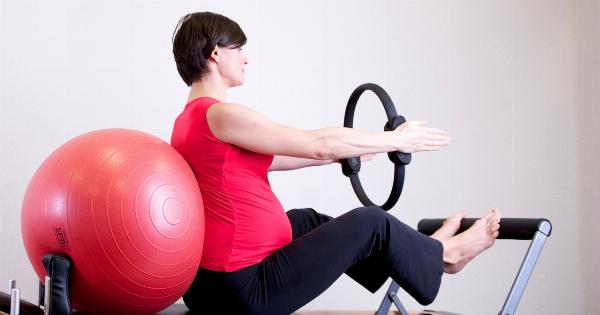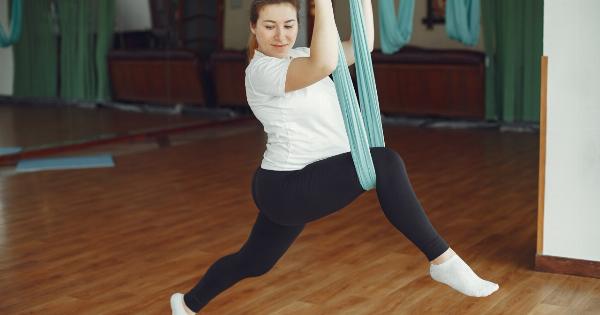Pregnancy comes with a lot of changes in a woman’s body. Additionally, the baby’s safety is also a top priority. Naturally, expectant mothers may have concerns about engaging in exercise during pregnancy.
However, exercising can provide numerous benefits for both the mother and the baby during this time. In this article, we will discuss whether exercise is safe during pregnancy and the benefits it offers.
Benefits of Exercise During Pregnancy
Exercise during pregnancy offers the following benefits:.
Improved Health
Exercise can improve health by boosting the immune system, controlling weight gain, reducing the risk of gestational diabetes and preeclampsia, and lowering the risk of cesarean delivery and other complications.
Reduced Anxiety and Stress
Pregnancy can be a stressful time, and exercise can help reduce anxiety and stress levels. Exercise releases endorphins, which can improve mood and reduce stress.
Better Sleep
Many expecting mothers may struggle with getting proper sleep, but exercise can help improve the quality of sleep. Improved sleep can help the mother feel more energized and refreshed.
Improved Recovery After Birth
Postpartum recovery is essential for every mother. Exercise during pregnancy can help the mother recover faster after giving birth, as it strengthens the muscles necessary for labor and delivery and improves cardiovascular health.
Types of Exercise Recommended During Pregnancy
Expectant mothers are recommended to engage in moderate-intensity exercise daily for at least 30 minutes, unless there is a reason not to. Suitable exercises to try during pregnancy include:.
Walking
This low-impact activity is perfect for pregnant women who want to exercise without putting too much pressure on the joints. Walking can enhance circulation and improve heart health.
Swimming
Swimming is another low-impact activity that pregnant women can consider. It enables the woman to exercise while feeling weightless, reducing pressure on the joints. Swimming also reduces swelling in the feet and legs.
Prenatal Yoga
Yoga can significantly improve the body’s strength, flexibility, and balance. Prenatal yoga is a type of yoga designed for pregnant women that provides both physical and mental benefits.
It can also help prepare the woman for childbirth by enhancing her breathing and relaxation techniques.
Pilates
Pilates is another low-impact activity. In addition to strengthening the core muscles, it also helps improve posture, flexibility, and balance. Pilates can also reduce back pain associated with pregnancy and improve the mother’s respiration.
Exercises to Avoid During Pregnancy
Although exercising during pregnancy is beneficial, there are certain types of activities that the expectant mother should avoid. These include:.
High-Intensity Exercises
High-intensity exercises such as running, jumping, and sprinting can be too strenuous for pregnant women and may cause injury.
Contact Sports
High-risk activities such as contact sports like basketball or volleyball should be avoided, as they pose a risk to both the mother and the baby.
Exercises That Require Lying on the Back
Any exercise that requires lying on the back should be avoided after the first trimester because of how it can limit blood flow to the uterus.
Is Exercise Safe During All Stages of Pregnancy?
As a general rule, exercise is safe during all stages of pregnancy, from the first trimester to the final trimester. However, there are some important factors to consider.
First Trimester
In the first trimester, the baby is still developing, and some expectant mothers may experience nausea and fatigue, making exercise a challenge.
However, if the mother feels up to it, low-impact activities such as walking and prenatal yoga can be a great way to stay active and reduce stress.
Second Trimester
The second trimester is when the baby is growing rapidly, and expectant mothers should consider engaging in low-impact activities such as swimming and walking. It is essential to listen to the body and pace oneself.
Third Trimester
In the third trimester, the baby is growing bigger, and physical activity may become more challenging.
Low-impact activities that don’t involve too much jumping or jarring movements, such as squats or prenatal yoga, can help keep the mother active and maintain physical fitness.
When to Stop Exercising During Pregnancy
While exercising during pregnancy is safe, there are times when expectant mothers may need to stop or avoid certain activities. They include:.
Bleeding or spotting
Any bleeding or spotting is a sign that the expectant mother needs to stop exercising and seek medical attention immediately.
Contractions
Contractions are a sign that the expectant mother is going into labor. Exercise should be stopped immediately.
Dizziness or lightheadedness
If the mother feels dizzy or lightheaded during exercise, she should stop and sit down until they feel better. If the feeling persists, they should seek medical attention immediately.
Shortness of Breath
If the mother experiences shortness of breath during exercise, they should stop and rest. If the feeling persists, seek medical attention immediately.
Conclusion
Exercise is safe during pregnancy and can offer several benefits for both the mother and the baby.
Although it is essential to consult a doctor before beginning an exercise routine, low-impact activities such as walking, swimming, and prenatal yoga can help expectant mothers stay fit and healthy during pregnancy. Remember to listen to the body and stop immediately if any danger signs come up.
























